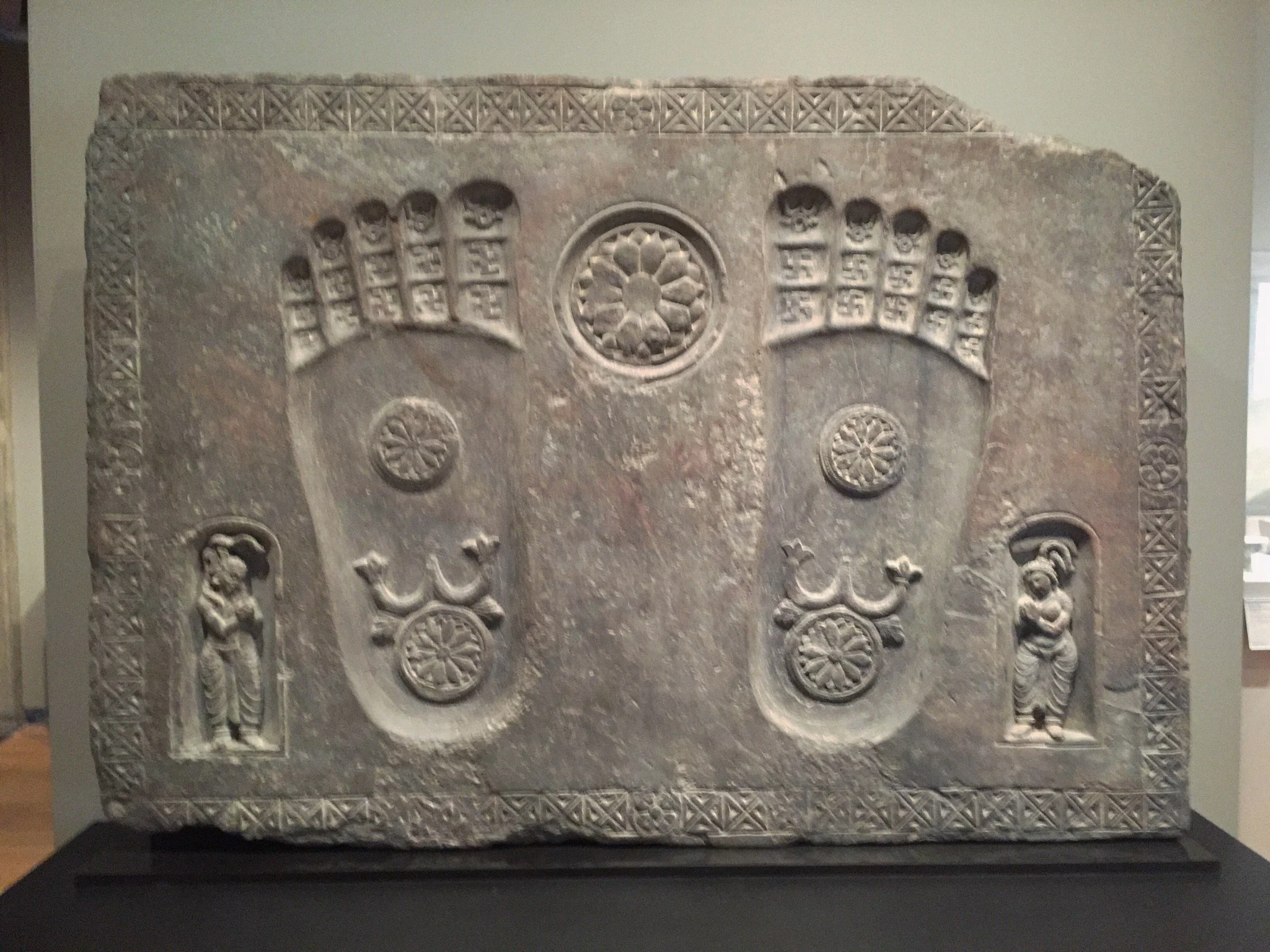Much like Vimalakirti, the sly layman of the eponymous sutra, we often meet people who challenge us with their pain, shake us out of our stupor by the mere fact of their presence or, rather, the jarring presence of their suffering. Vimalakirti’s illness was Upaya, skillful means for instructing even some of the great Bodhisattvas in the uncomfortable face of suffering, the true cost of compassion.
So this means too that one of the basic points of the sutra is that though ultimately there is no sickness, in this realm of form, and that sickness can be useful not only as a tool for awakening, but as a means to helps others wake up, it is also real, and acute, and a cruel teacher. To learn compassion, or inspire compassion in others, then, is to recognize both the form and emptiness of pain.
Much like the short Pali teaching The Monk with Dysentery, illness becomes the sharpest of blades, challenging our compassion, our vows, the true cost of the Bodhisattva vow to save all beings. Illness reminds us that practice has to include the dirty work.
Two friends of mine died, years apart an under drastically different circumstances, but their teachings have become, for me, inspiration for living my vow and constant challenges to any bullshit or pride inherent in my practice.
Roger was a resident of the nursing home where I was to do my practical portion of CNA training. My (and my partner’s) duties for him included the most feared of tasks for the trainees: He had an colostomy bag, which had to be emptied and replaced as part of washing him and getting him ready for bed. Once we got him undressed and in the shower, we saw clearly that no one had changed his bag in some time; it was full. I jumped right in and volunteered to the one to change him. I barely touched the bag when it popped loose from his side, and shit therein was now all over me, over him, over my partner. I was also face-face with the open stoma, which was oozing more shit.
Shari Faye Smith was a friend I only met once, on an episode of Forensic Files. She had been abducted by a serial killer who taunted her family by phone once she was in his clutches. Before he was to torture and kill her in the most unspeakable ways, he made her write out a last will. Fully aware that she was going to die not soon after writing it, fully aware of the horror and pain she about to endure, she spent her last few clear-headed moments to show compassion to her parents, and to meet her fate with a steely grace that goes to the marrow of the bodhisattva vow:
I love you Mommy, Daddy, Robert, Dawn & Richard (her boyfriend) and everyone else and all other friends and relatives. I’ll be with my Father now, so please, please don’t worry. Just remember my witty personality & great special times we all shared together. Please don’t even let this ruin your lives, just keep living one day at a time for Jesus. Some good will come out of this. My thoughts will always be with you & in you. Casket closed. (Emphasis mine.-mw.)
Mom, Dad, Robert & Dawn, there’s so much I want to say that I should have said before now. I love y’all! I know ya’ll love me and will miss me very much, but if ya’ll stick together like we always did – ya’ll can do it! Please do not become hard or upset. “Every thing works out for the good of those that love the Lord” (Romans 8:28).
She had just turned 18.
While she derived her strength and resolve from a faith source we may or may not share, the lesson of the power of pain to speed up a realization of, access to, the marrow of practice is clear. Shari Faye Smith embodied Great Faith, Great Doubt and Great Effort as resolutely as any Patriarch.
In Vimalakirti’s little room, the great radiant Bodhisattvas of the 10,000 Realms had no answer to his bringing them face-to-face with simple sickness and death. Of course, there was really nothing in the room at all, illness being ultimately empty as is all form. So that form was empty, but in the moment experienced was a hammer to the face of ignorance, to the dreams of bliss and mastery.
My friends the old man, the teenage girl, and all teachers and bodies (including my own), remind me that the dharma gates we sometimes enter in order to help all beings are doors to sickness, to shit, to incredible pain, to a lost cause, all icy-hot challenges to our own vows, our own Great Faith, Great Doubt, and Great Effort.
What in your life or your practice helps you run toward the dirty work?
What pain do you avoid or turn away from, because it isn’t comfortable or is too painful to embrace?
My answers to that last question include abused animals/images of factory farming, aggressive mental illness, hungry kids; I’m sure that behind the many other doors that need to be opened by me, are suffering beings for whom my tears, self-doubt, squeamishness and pity are not welcome and shown to be hollow.
How can we possibly live our vows? How do I come to embrace the dire needs that are always present? Advancing toward the light is the same in emptiness and form, in contingent and Ultimate realms as shit, and blood, and helpless, raw suffering. How does all that simple yet kinda esoteric idea play out in the mud of your daily life? By getting as close as you can to it, eyes wide open, and become what the moment needs.
Rev Mike Jinji Sunya
